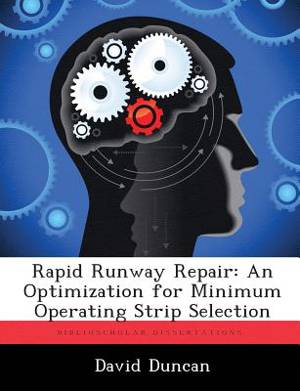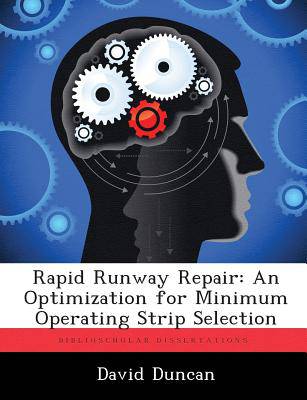
- Afhalen na 1 uur in een winkel met voorraad
- Gratis thuislevering in België vanaf € 30
- Ruim aanbod met 7 miljoen producten
- Afhalen na 1 uur in een winkel met voorraad
- Gratis thuislevering in België vanaf € 30
- Ruim aanbod met 7 miljoen producten
Zoeken
Rapid Runway Repair
An Optimization for Minimum Operating Strip Selection
David Duncan
Paperback | Engels
€ 78,95
+ 157 punten
Omschrijving
Minimum Operating Strip (MOS) selection determines the exact placement of the MOS on the damaged runway, and therefore, the amount of munitions that need to be neutralized and the amount of damage that will need to be repaired. MOS selection, in essence, is the key determinant of the time required to attain an operational takeoff and recovery surface. Since the MOS selection stage determines the events and scope of work for all of the Rapid Runway Repair (RRR) stages that follow, it could be argued that this is the most important stage in the entire RRR process. The primary purpose of this research was to evaluate the application of a decision analysis methodology for the selection of a MOS during the RRR process. The secondary purpose was to determine the effect of additional considerations on both the MOS selected and the repair time. MOSs selected utilizing the outlined methodology were compared to a MOS selected using the current USAF method. Results showed that additional considerations have an impact on both MOS selection and time to repair. Results also showed that the outlined methodology selected a MOS with a shorter repair time, despite additional damage, than the MOS selected using the current USAF method.
Specificaties
Betrokkenen
- Auteur(s):
- Uitgeverij:
Inhoud
- Aantal bladzijden:
- 128
- Taal:
- Engels
Eigenschappen
- Productcode (EAN):
- 9781288369355
- Verschijningsdatum:
- 29/11/2012
- Uitvoering:
- Paperback
- Formaat:
- Trade paperback (VS)
- Afmetingen:
- 189 mm x 246 mm
- Gewicht:
- 240 g

Alleen bij Standaard Boekhandel
+ 157 punten op je klantenkaart van Standaard Boekhandel
Beoordelingen
We publiceren alleen reviews die voldoen aan de voorwaarden voor reviews. Bekijk onze voorwaarden voor reviews.











